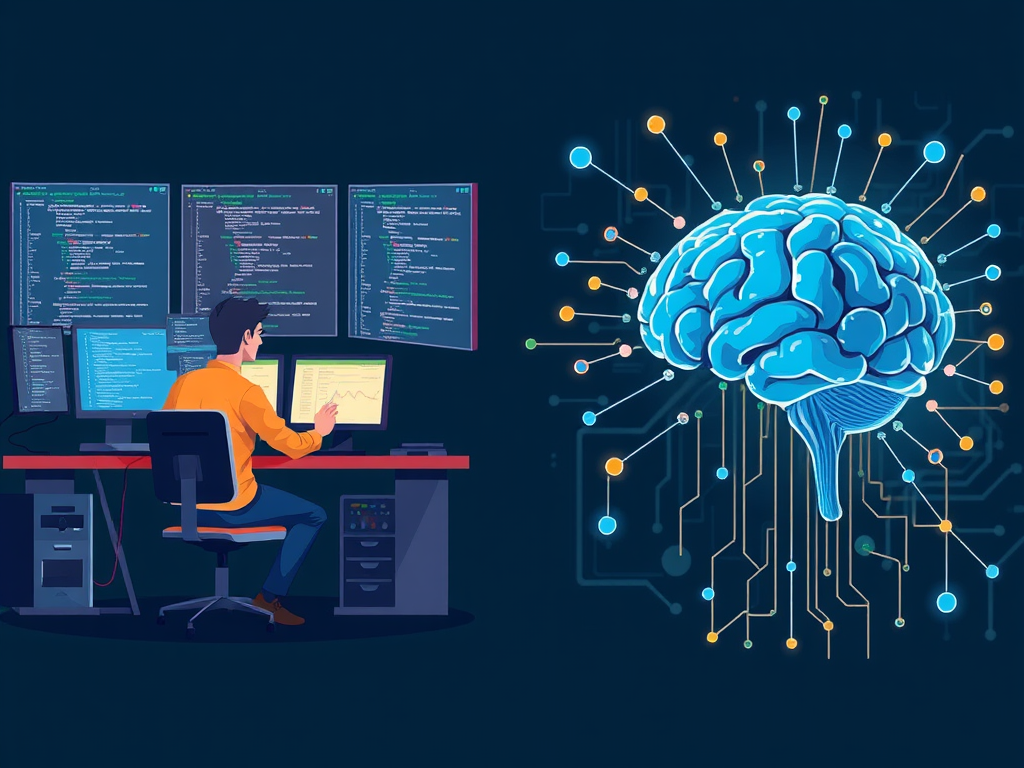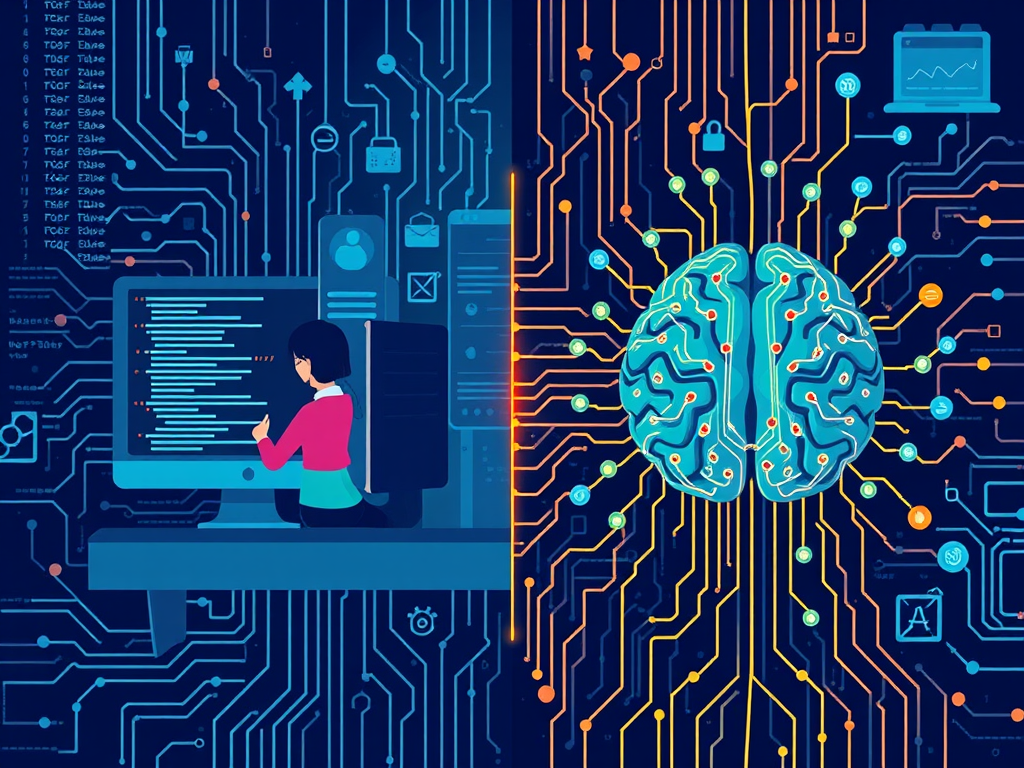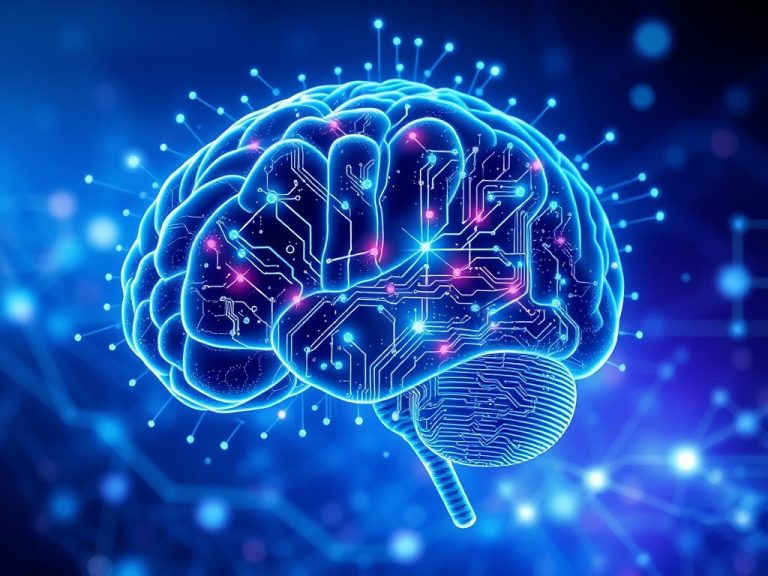
Introduction
“Machine learning” and “traditional programming” are two terms that frequently arise in discussions about technology. Both are methods for creating software, but they operate in very different ways. Understanding these differences is essential for anyone interested in technology, whether you’re a developer, a business owner, or just a curious learner. This article will explore what traditional programming and machine learning are, how they compare, and the benefits and challenges of each.
What is Traditional Programming?
Definition
Traditional programming is the process where developers write specific instructions for a computer to follow. They use programming languages like Python, Java, or C++ to create software that performs certain tasks. In this approach, every action the computer takes is explicitly defined by the programmer.
Key Features
- Clear Instructions: In traditional programming, developers must write down every step the computer should take to solve a problem or perform a task. This makes the logic very clear and straightforward.
- Consistent Results: When you run a traditional program with the same input, it will always produce the same output. This predictability is helpful for debugging and testing.
- Limited Learning: Traditional programs do not learn from experience. If the situation changes or new requirements arise, developers must manually update the code to adapt.
Uses
Traditional programming is widely used in various fields, including:
- Building Websites: Developers create web applications using languages like HTML, CSS, and JavaScript.
- Creating Software for Devices: Applications for smartphones and tablets often rely on traditional programming.
- Developing Video Games: Game developers use traditional programming to define the rules and mechanics of the game.
- Programming Embedded Systems: Devices like microwaves, cars, and appliances use traditional programming to operate.
What is Machine Learning?
Definition
Machine learning (ML) is a branch of artificial intelligence that enables computers to learn from data. Instead of being given strict instructions, ML systems analyze large datasets to find patterns and make decisions. This allows them to improve their performance over time.
Key Features
- Data-Driven: Machine learning relies on vast amounts of data to train models. The more data the model has, the better it can learn and make predictions.
- Adaptability: ML models can adapt to new data and changing conditions. This means they can improve their accuracy without needing extensive code changes.
- Varied Outcomes: Unlike traditional programming, the results from machine learning can vary based on the data used for training. This probabilistic nature makes ML less predictable but also more versatile.
Uses
Machine learning has a wide range of applications, including:
- Recognizing Images and Speech: ML is used in facial recognition systems and voice-activated assistants like Siri and Alexa.
- Understanding and Processing Language: Natural language processing (NLP) helps computers understand human language, powering chatbots and translation services.
- Recommending Products: Companies like Netflix and Amazon use ML to recommend movies or products based on user preferences and behaviors.
- Driving Cars Autonomously: Self-driving cars use machine learning to interpret data from sensors and make real-time driving decisions.

Comparing Machine Learning and Traditional Programming
Development Process
- Traditional Programming: Developers write all the rules and logic in the code. This process can be straightforward for simple tasks but becomes complicated for more complex problems.
- Machine Learning: Developers focus on preparing data, selecting algorithms, and training models. The emphasis is on understanding the data and evaluating the model’s performance.
Performance and Efficiency
- Traditional Programming: The performance of traditional programs is set and predictable. Debugging is generally easier because developers know exactly how the program should behave.
- Machine Learning: ML performance can improve with more data, but it can also lead to issues like overfitting, where the model learns the training data too well and performs poorly on new data. Evaluating and tuning ML models can be more complex.
Scalability
- Traditional Programming: Scaling a traditional program may require significant rewrites or changes to the codebase, especially if the software needs to handle more users or data.
- Machine Learning: ML models can scale more easily by retraining with new data. This adaptability allows businesses to respond quickly to changing demands without extensive code modifications.
Advantages and Challenges
Advantages of Traditional Programming
- Simplicity: Traditional programming is easier to understand and implement for straightforward tasks. The logic is clear, making it accessible for beginners.
- Predictability: Traditional programs provide consistent results, which makes testing and debugging simpler. Developers can easily identify and fix issues.
- Control: Developers have complete control over how the program works. This control is essential for applications where precision and reliability are critical.
Challenges of Traditional Programming
- Limited Flexibility: Adapting to new scenarios can be challenging. If the requirements change, developers must rewrite parts of the code, which can be time-consuming.
- Time-Consuming: Writing detailed rules for every possible scenario can take a lot of time, especially for complex applications.
Advantages of Machine Learning
- Flexibility: ML models can adapt to new data and learn from it, which is especially valuable in fast-changing environments.
- Automation: Machine learning can automate complex decision-making processes, reducing the need for manual coding of rules.
- Handling Complexity: ML excels in tackling problems that are too complex for traditional programming, such as recognizing patterns in large datasets.
Challenges of Machine Learning
- Data Dependency: Machine learning requires large amounts of high-quality data for effective training. Poor data can lead to inaccurate models.
- Complexity: Understanding and debugging machine learning models can be challenging. The “black box” nature of some ML algorithms makes it hard to see how they arrive at specific decisions.
Conclusion
Both machine learning and traditional programming have unique strengths and weaknesses. Traditional programming works best for tasks with clear, well-defined rules, where predictability is crucial. On the other hand, machine learning shines in complex, data-driven scenarios that require adaptability and flexibility.
As technology continues to evolve, understanding the distinctions between these two approaches will be essential for developers, businesses, and anyone interested in the future of software development. Whether you are building a simple application or a sophisticated AI system, recognizing when to use each method can lead to better solutions and innovations.
#innovation #technology #machinelearning #AI




